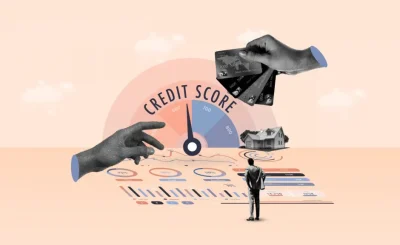In simple terms, a loan is a lending of currency by one or more people, companies, institutions or other relevant entities to another persons, companies etc. The borrower is then obligated to pay interest on this debt plus to repayment of the principal amount borrowed and usually in a specified period of time. Since banks generally lend funds in the form of loans to businesses and individuals who have a sound financial background, they normally exercise caution when it comes to assessing credit risk or creditworthiness of a borrower. Hence, most of the times people with bad credit are rejected for a loan. However, the fact that most small businesses do not carry out credit checks does not mean that they should be denied credit.
If you want to apply for a loan, it is important that you convince the lender of your financial history and that too in a transparent and straightforward manner. First of all submit a financial history to the lender which details about your previous and current monetary activities like how much you earn, how much you spend and any debts that you might be having. It is also important that you give a clear explanation as to why you are unable to repay the loan. A loan that is granted despite your inability to repay it may not always be the best option so make sure you give details of your financial status which will clearly explain to the lender why you are not able to pay back the loan in full.
The term loan refers to a fixed term loan whereby the loan is granted for a particular period of time. Usually, these loans are given for a fixed term ranging from one month to thirty years. A two-year term loan refers to a term loan, whereby the loan is granted at a fixed rate and for a minimum of two years. The terms and conditions governing these loans are quite different from one company to another and you would do well to understand the fine print of any agreement before signing on the dotted line. The rates of interest and other charges vary depending on the company.
revolving loans are usually used by people who have a regular source of income and thus are able to make regular payments. Thus, there is less need for a lot of documentation and there is a high chance that you will be repaying the loan without having to worry about losing your source of income. In such cases, the borrower would benefit if he decides to extend his payment term as he would then be repaying lesser amounts over a longer duration.
There are two types of variable-rate type of loans; these are the fixed-rate and the adjustable-rate type of loans. The former follows the same principle of making payments according to the loan principal amount plus interest, while the latter involves an interest rate that changes according to the market. The key takeaways here are that the fixed-rate loan principal amount plus interest are lower than the adjustable-rate type while both are able to repay principal in a span of a longer time frame. These key takeaways are to help borrowers plan and make an informed decision while they are negotiating with their lending institutions.
As mentioned, some people prefer to get a secured loan. A secured loan is one where the borrower pledges an asset or some real estate as collateral. As a result, the lender has the guarantee that if he does not repay the loan, he will get back the collateral that was pledged. In other words, he will be able to retrieve the funds even if the borrower defaults. The benefits of secured loans are that you stand a better chance of recovering your funds if you do not pay them on time because the lender has a stronger claim that you have given him the property as security. On the other hand, the disadvantage of secured loans is that you will end up paying a higher interest rate because your risk is higher as compared to unsecured loans.










